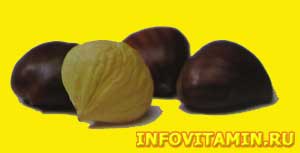Biotin and pantothenic acid — description, properties and application, daily allowance, food sources
 Vitamin B5 (pantothenic acid). |
Biotin and pantothenic acid — these B vitamins are important for metabolism. Supplements with them help in the treatment of certain diseases and are useful for people whose diet includes refined foods.
What is biotin and pantothenic acid — description
Biotin and pantothenic acid are widely present in food products, so their deficiency is rare. In addition, biotin is synthesized by the microflora of the colon, although it is unknown how much of our needs are met by this internal source. The composition of multivitamins and a complex of B vitamins usually includes biotin and pantothenic acid, also called vitamin B5. The main form of biotin is D-biotin. Pantothenic acid is represented by two forms — pantethine and calcium pantothenate.
Properties and role in the body, the daily norm of biotin and pantothenic acid
Properties
Both biotin and pantothenic acid take part in the formation of various enzymes and the breakdown of carbohydrates, fats and protein from food to forms in which they can be absorbed by the body. Biotin plays a special role in helping the body use glucose. It keeps nails and hair in a normal condition. Pantothenic acid is required by the body to maintain connections between the brain and the rest of the nervous system and to produce certain stress hormones.| Do you know? |
| The name «biotin» comes from the Greek word «bios» (life). Pantothenic acid is a derivative of the Greek word «pantos» — «everywhere». |
Main use
Biotin supplements improve the condition of weak and brittle nails and help slow down hair loss associated with biotin deficiency. Pantothenic acid is used to produce stress hormones. With prolonged emotional stress, depression or anxiety, which are accompanied by the production of excessive amounts of these hormones, the body's need for vitamin B5 increases. The stresses caused by migraine, chronic fatigue syndrome or quitting smoking can be mitigated by supplements with pantothenic acid. In combination with B vitamins choline and thiamine, pantothenic acid can be used for indigestion; it also eliminates nasal congestion caused by allergies.Additional benefits
Biotin in very large doses is able to help diabetic patients by enhancing the body's response to insulin, which leads to a decrease in blood glucose levels. It protects against the nerve damage observed in diabetes.
| For your information |
| Biotin is important for hair health, but, contrary to some statements, it does not save from baldness (except for rare cases of its deficiency). Pantothenic acid does not prevent normal age-related graying of hair. Cooking destroys most of the pantothenic acid present in food. For example, bread and breakfast cereals contain only half of the pantothenic acid present in whole grains of cereals. Even more (up to 70%) pantothenic acid is lost when freezing and thawing poultry or fish and when canning beans. |
The daily norm of biotin and pantothenic acid
There are no recommended daily norms for biotin and pantothenic acid, but it is believed that 30-100 mcg of biotin and 4-7 mg of pantothenic acid are sufficient to maintain healthy body functions. With certain violations of them, increased doses may be required.
- Is a disadvantage. Biotin or pantothenic acid deficiency is not observed in adults. Biotin levels may fall below the optimal level with prolonged use of antibiotics and anticonvulsants.
+ Excess. Although there are no serious side effects when taking high doses of biotin or pantothenic acid, doses exceeding the maximum safe dosages of 900 mcg and 200 mg, respectively, should not be taken.
Indications and methods of application of biotin and pantothenic acid, food sources
Biotin
• Brittle nails, hair loss.
• The need to help the body in the use of carbohydrates, fats and proteins.
• The need to improve blood sugar control.
Pantothenic acid
• Diseases of the central nervous system.
• The need to improve the use of carbohydrates, fats and proteins.
• Chronic fatigue syndrome, migraine, indigestion and symptoms of some forms of allergies.
| Caution! |
| If you are being treated with medications, take any medications only with the permission of a doctor. |
Release form
• Capsules
• Liquid
• Soft capsules
• Tablets
Methods of application of biotin and pantothenic acid
• Reception scheme
For nails and hair: take up to 900 mcg of biotin per day.
Under stress: take 100 mg of pantothenic acid as part of the vitamin B complex.
With migraines: 100 mg of pantothenic acid 2 times a day.
With chronic fatigue syndrome: 100 mg of pantothenic acid 2 times a day.
For chronic indigestion: 100 mg of pantothenic acid 2 times a day plus 50 mg of thiamine in the morning and 500 mg of choline 3 times a day.
With allergies: 100 mg of pantothenic acid 2 times a day.
With diabetes: website infovitamin.ru It recommends consulting with a doctor about the possibility of taking high doses of biotin to relieve or prevent diabetic neuropathy.
• How to take
Most of us have enough biotin and pantothenic acid contained in multivitamin supplements or vitamin B complexes.
 Nuts, such as chestnuts, are a good source of biotin. |
Individual supplements are required only in the presence of specific diseases. In most cases, such supplements should be taken with meals.
Food sources of biotin and pantothenic acid
Liver, soy and whole grain products, nuts, oatmeal, rice, barley, legumes, cauliflower are rich in biotin. Liver, fish, poultry, whole grain products, yogurt and legumes are the best sources of pantothenic acid.
| Latest news |
| According to a study conducted in Switzerland, biotin can increase the thickness of nails by an average of 25%. After six months of taking biotin supplements, the condition of brittle nails improved in two-thirds of the people who took part in the experiment. |
To the section «Vitamins — descriptions, properties and applications»
•••••••••
